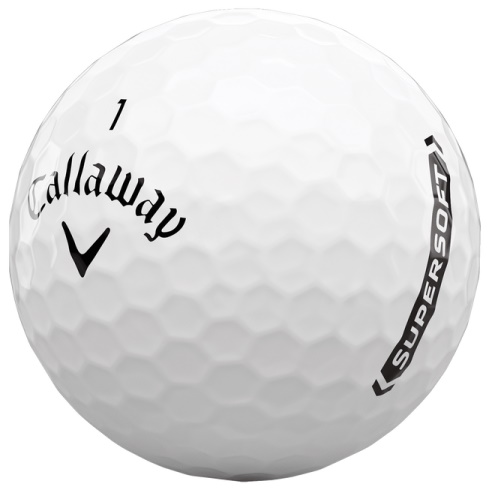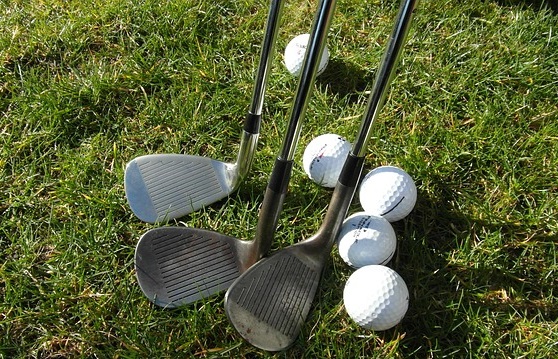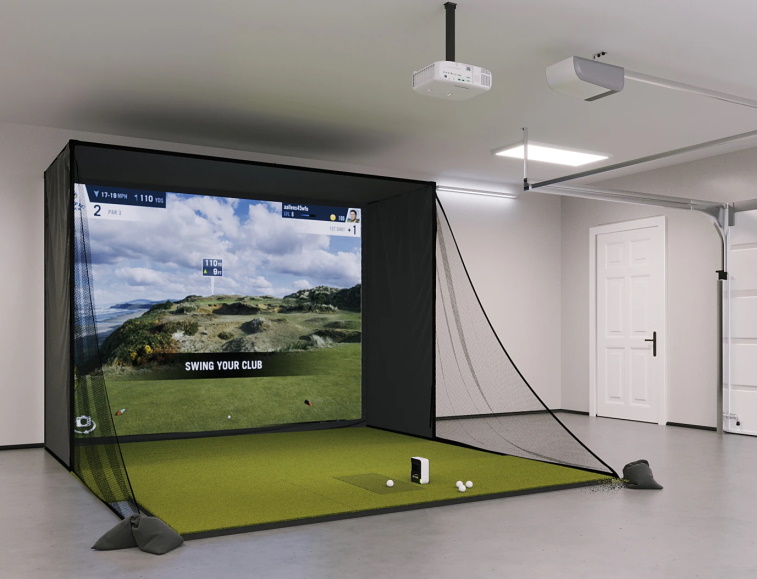Golfstead is reader-supported. When you buy through links on the site, we may earn an affiliate commission at no extra cost to you. Our affiliations include, but are not limited to, the eBay Partner Network and Amazon Associates.

Golf is a good excuse to enjoy time in the great outdoors, whether by yourself or with friends or family.
To some, the game can seem complicated and intimidating, with many different rules and equipment needed. Others may think it’s simple and straightforward to take a club and strike a small ball with it, even though in reality, it’s not so easy.
Have you considered giving golf a try but aren’t sure how to play it?
Don’t be put off; this article will walk you through the essentials of what you need to know. Here’s what will be covered:
By the end of it, you’ll have a good idea of how to play golf and will be more than ready to take a dive into this great sport.
The Objective

The objective of the game of golf is simple: you need to get the golf ball from the tee into the hole in as few shots (or strokes) as possible. Achieving this objective is more difficult, but more on that later.
Golf is played on a stretch of land called a hole (not to be confused with the hole the ball goes into). A collection of holes, usually 9 or 18 of them, makes up a golf course.
Each hole has a par score given to it, which is normally between 3 and 5 depending on how long the hole is.
How many strokes it takes you to get the ball into a hole determines your score. Some common scores include:
- Triple Bogey: three strokes over par.
- Double Bogey: two strokes over par.
- Bogey: one stroke over par.
- Par: strokes are equal to par.
- Birdie: one stroke under par.
- Eagle: two strokes under par.
- Albatross: three strokes under par.
Scores are also assigned a number. For example, if you get the ball into the hole in five strokes on hole #8, your score for that hole is 5.
Typically, either 9 or 18 holes are played in a round of golf. At the end of the round, the scores for each individual hole are added up to give you your total score. This score is compared to the par number of the course and used to calculate your handicap, which we explain in detail on this page.
The Rules

The rules of the game of golf are complex and are governed by organizations called the USGA and R&A.
Almost anything can happen during a game of golf, and as such, the rules need to cover every possibility, and even regulate the type of golf clubs and balls you can use.
You will need to be quite familiar with many of the rules of golf if you play in official competitions. However, if you’re just playing recreationally, you only really need to know the basics.
Some of the important rules of golf to remember are:
- The tee marks the starting point of each hole. You must not start from in front of the tee markers.
- The player who is farthest away from the hole will generally hit his or her shot first.
- You must play the ball as you find it. Do not move anything around it, such as branches or long grass, in order to improve your lie, or you will be penalized.
- If you cannot find your ball, you have three minutes to search for it. Your playing partners can join you in looking for the ball, but your time starts when the first person starts looking for the ball.
- If your ball is in an unplayable position, you can take a “penalty drop”, for which you will be penalized one shot. When taking a drop, you must drop the ball from knee height, and within two club-lengths of where the ball finished. If you hit your ball in a water hazard then you will need to take a penalty drop within two club-lengths of where the ball crossed over into the water hazard.
- If you cannot find your ball and it didn’t go into a hazard area (e.g. a lake), you need to take a penalty, and are required to play a new shot from where you played your last shot. If you are unsure if you will find your ball, you can play a “provisional ball” from the spot where you hit the original shot, and if you find your original ball you will not be penalized.
- If your ball finishes on a cart path or a sprinkler head, or these will affect your stance/swing, you can take free a free drop if you wish. This must be taken at knee height, and within one-club length of where you would not be impeded. You will not be penalized for a free drop, and the cannot be nearer to the hole than where it was initially.
- When your ball is on the green, you can lift, mark and clean your golf ball as long as you return it exactly where it was. You can use coins, golf tees, or special golf markers to mark the spot.
Until recently, when putting on the green, you would need to remove the flagstick or you would be penalized if your ball hit it. This rule has now been removed, so you can keep the flagstick in when putting on the green.
Equipment
There are a plethora of equipment, devices, and accessories that you can use when you play golf. But when it comes to essentials, you will need golf clubs, golf balls, a golf bag, and golf tees.
As a beginner, you don’t need to buy the most expensive golf equipment on the market — there will be plenty of time to upgrade later as your skill improves.
Golf Clubs

Borrowing some old clubs from a friend or buying a secondhand set will be more than enough to get you started. Another option is to get custom-fitted for a set of clubs, but don’t look at the expensive models right away.
The rules of golf allow you to start a round with up to 14 clubs. This will normally include a driver, some fairway woods, a set of irons, some wedges, and a putter. If you put more than 14 golf clubs in your bag, you will be penalized, even if you don’t use them all.
You can choose any combination of clubs to make up your 14 golf clubs, but if you are just starting out, you don’t necessarily need to take 14 clubs with you. This is especially true if you are playing on a short course, often called a “pitch-and-putt course”, where shorter clubs like wedges will be used more regularly than longer clubs like woods.
However, it is always recommended to include a putter, as you will struggle on the greens without it. Some golf club manufacturers make golf clubs specifically for beginners, and these can be a great purchase for newbies as they make the ball much easier to hit.
Golf Balls

Obviously, you cannot play golf without golf balls. If you are just starting, it’s recommended that you take many golf balls with you to avoid running out of balls during your round. This is especially true if you are playing at a difficult course with a lot of water hazards.
The best golf balls on the market can cost over $50 for a pack of 12, but if you are just starting out you can buy cheaper golf balls. More expensive golf balls are likely to give you more spin and control around the greens, but this is unnecessary for most beginners.
Used golf balls offer better value for money, and they can be purchased either online (at places like eBay) or at some stores.
Golf Bags

Golf bags come in all different shapes, sizes and styles, but there are two general categories of golf bags: cart bags and stand bags.
Cart Bags
Cart bags are designed to be loaded onto golf caddies and golf carts. They are much bigger and heavier than stand bags, but the upside of this is that they provide more space for balls, tees, and any extra clothing you may need.
Because of its extra weight, you are unlikely to enjoy carrying it around a golf course, so make sure that you have access to a caddie or cart.
Stand Bags
Stand bags are designed to be carried, and to make this tolerable, they tend to be a lot lighter.
These bags can stand upright with or without an extending tripod mechanism. Their convenience features mean that they often provide less space for storing clubs and accessories.
Golf Tees

Golf tees are used when starting a hole. They allow for the golf ball to be raised off the ground, which will allow you to make contact with the driver, which is the club you can hit the farthest.
They can be used for any golf club of the tee, and they are very helpful for beginners, as raising the ball of the ground can make it easier to hit a good shot. They can also be used to mark your ball on the green and repair pitch marks made on the green by your ball.
You can also consider the following optionals:
- golf gloves: typically worn on one hand (left hand for a right-handed golfer), these help with gripping the club.
- golf shoes: these are designed to increase grip on grass and be breathable and supportive.
- golf towel: used to wipe sweat from the hands and face as well as wipe club grips and balls.
- GPS units: used to give you yardage information for each hole as well as keep score.
- rangefinders: used to get the precise distance to the flagstick or any other point on the course.
Golf stores are full of all kinds of golf equipment, and you can easily rack up thousands of dollars on the latest knickknacks, but this isn’t necessary for most golfers.
Course Etiquette

It is important to be aware of general golfing etiquette to ensure that you don’t upset your playing partners or those around you.
Below are some guidelines that you should do your best to follow:
1. Alert spectators of stray balls.
If you hit a shot left or right that is travelling towards someone, you should shout “fore” loudly or extend your arm in the direction the ball is going.
This will alert spectators that a ball is travelling towards them, and they can take necessary action.
2. Don’t talk during shots.
Many golfers want silence when they are playing. It is fine to talk to your playing partners between shots, but when they are preparing to hit their shot, you should probably keep quiet.
3. Play at a reasonable pace.
Golf is naturally a slow game, taking 3-4 hours or more to play 18 holes. People do not want to be held up by the group in front of them, so playing at a fairly quick pace is encouraged.
This doesn’t mean you have to run around the course, but make sure that when it is your turn to play you are ready.
If you are holding up the group behind you, it is good etiquette to let them play through you, rather than making them wait.
4. Check the clothing policy.
Different golf courses have different rules regarding the clothes you can wear when playing golf.
Over the last couple of decades, many golf clubs have made an effort to be more inclusive and drop their clothing rules, which some saw as old-fashioned. However, the golf clothing policies are set by the individual golf courses, so it’s worth checking first to avoid any confrontation or embarrassment.
5. Don’t step on a putting line.
When your playing partners are on the green, you should never step on the line between their ball and the hole.
This is because your shoes can make indentations on the green, especially if they have spikes. These marks or indentations can interfere with the roll of the ball and throw it off-line.
Instead, walk around the lines of your playing partners, and give it a wide berth in case they decide to play a lot of break.
6. Replace divots and fix ball marks.
When you hit a shot, usually with irons but sometimes with woods that aren’t teed up, you can leave a divot, which is a hole or mark that is cut out of the turf by the club’s impact.
It’s generally very good practice to replace your divots by picking up the piece of turf that was cut out, fitting it back into the divot, and tamping it down with your club or foot. If the turf isn’t in one piece, you should fill the divot with sand and level it.
Similarly, you should repair marks left by your ball impacting the green. To do this, use a tee or repair tool to lift up the indented grass slightly above ground level and then tamp it down with your putter.
This list is by no means exhaustive; there are other etiquette considerations such as not standing in your partner’s line of sight, tending the flagstick, and not leaving your tee behind. With experience, you will learn the full picture of how to behave on the course.
Tips For Improving
If you have just started playing, it is important to be realistic with your goals. Golf is a challenging game, and you will not be ready for the professional tours overnight.
The first thing you should do is learn how to swing a golf club. We’ve written a complete guide on that which you can get here.
Keep practicing until you figure out how to make solid ball contact with your woods and irons as consistently as possible.
Beyond the basics, there are many things you can do to improve your game, such as:
1. Get in-person coaching.
You will find that when you play golf, every Joe Shmoe will offer you tips on your technique. Understand that they may not always be in a good position to offer you advice, and the worst thing that you can do is follow bad advice.
There are a vast number of golf coaches available in countries around the world. Often referred to as golf professional, they may be based at your local golf course or a driving range.
If you’re serious about becoming a good golfer, it is important to make sure that you are employing a sound technique, as making changes to your swing later down the line can be challenging. While they may be expensive, golf professionals can help you get on the right track.
2. Improve your short game.

Whilst you may be the envy of your friends if you hit a golf ball a long way, if you really want to improve your score, you need to work on your short game which includes pitches, chips, bunker shots and putts. This is often referred to as the “short game”.
Most shots taken during a round of golf are taken from within 50 yards of the hole, but this can often be overlooked for the longer shots.
You can easily waste multiple shots on each round of golf with a poor short game, and that’s why the old saying goes “drive for show and putt for dough”.
3. Play it safe.
Golf courses are full of hazards that can penalize you and ruin your score. They could be deep bunkers, water or trees.
It’s easy to get carried away and think you can hit a shot close to the hole even if the hole is close to a hazard. When starting out (and even for most amateurs), it is advisable to use a safe playing strategy and aim for the middle of the green or fairway to mitigate risks.
4. Use a golf simulator.
A golf simulator is a high-tech system that enables you to play golf indoors in a virtually simulated golf environment. It is a computerized golf setup designed to mimic the real game, helping you analyze your swing, understand your weaknesses, and improve your game without having to go to your local course.
A good golf simulator will cost thousands of dollars, but financing is usually available. Alternatively, you can pay to access a professional golf simulator bay at an indoor golf center in your local area.
You can check out our list of the best golf simulators here.
5. Use a launch monitor.
A launch monitor is a device that measures various parameters related to the club and ball at impact. Some of the most common measurements include carry distance, spin, ball speed, and club head speed.
At their core, launch monitors give you numbers after each shot. You can use them outdoors at the driving range or indoors with a net or impact screen.
Launch monitors will help you understand your game on a much deeper level, allowing you to identify and work on your weaknesses. They can be very expensive, but there are also many very affordable units on the market.
You can check out our list of the best golf launch monitors here.
6. Keep practicing.
As with anything, the more your practice golf, the better you will get. You can practice at the driving range, or just by playing golf with friends.
When practicing, make sure you have a purpose, as aimlessly hitting golf balls is unlikely to improve your game.
Also, the cost of rounds and range balls can really add up, so if you’re serious about the game, look for course or range deals that allow you to play as much as you want within a certain time frame.
7. Consume golf content.
Golf magazines and websites such as Golfstead are full of helpful hints and tips. They may include sections on technique and practice drills, such as “how to stop a slice“. Many teaching videos are available on YouTube.
There are also special programs and other resources for people who want to quickly take their golf game to the level they want it to be at. A great example is Body For Golf.
The Body For Golf program will show you how you can elevate your golf game substantially in six weeks. This includes increasing your driving distance by 15-20 yards, increasing your energy levels, developing a more flexible body, and maintaining an edge over your competition.
But don’t go too crazy with this. While golf instruction can be a big help to you along the way, at the end of the day, you need to find what works for you.
Conclusion
Golf is a terrific sport for getting exercise, socializing with friends, and enjoying the outdoors. While at first it may seem intimidating, the feeling of hitting a great shot or holing a long putt will leave you wanting more and more.
If you’re a complete beginner who wants to know how to play golf, the steps you’ll need to take are:
- Understand the basic concept of the game.
- Get a general idea of how to swing a golf club by watching a few people do it.
- Get some golf clubs and start playing.
- Figure out the rest as you go.
This guide will help you set out on your journey as a golfer. If you already have experience with the game, it will help make sure you’re on the right path. Good luck!
Thanks for reading this guide. If you have questions about playing golf, don’t hesitate to leave a comment below!






My husband and I want to go to the country club this summer to get better at golf. We love to play, but we’re not that good. Thanks for mentioning that the key is improving the short game!
If you budget and manage your time well, you can definitely play the amount of golf it takes to get better. Good luck!
I know lot of people starting to play golf, and I’m quite intrigued. Though, I think I’ll practice at miniature golf places before going to the real thing.
Miniature golf can help you get a feel for putting, but that’s about it. There’s really no reason to wait!